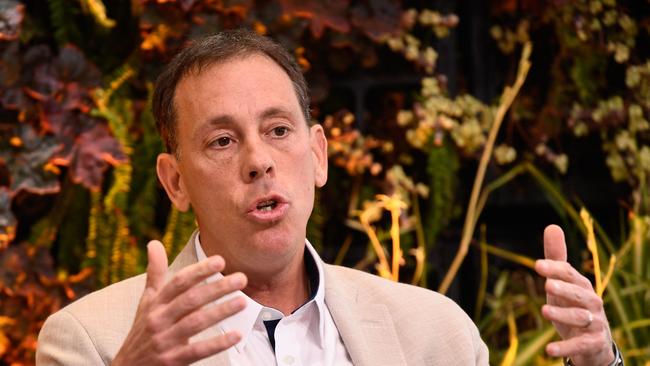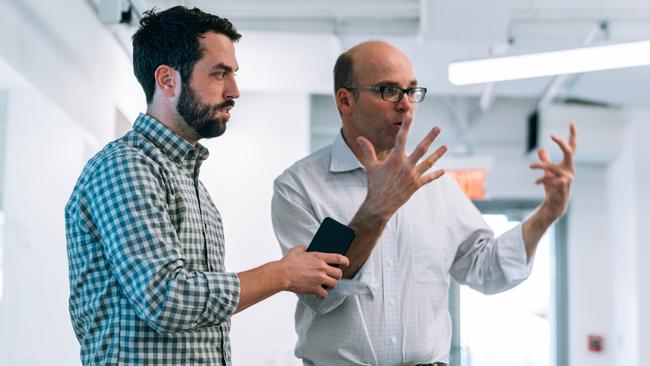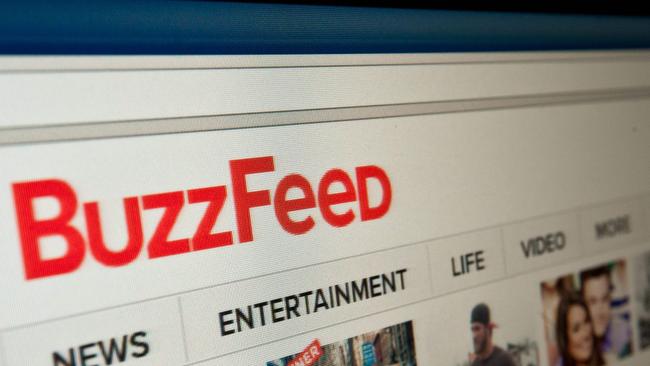How to make money in media
Niche, high-quality news paid off for $US500m start-up Axios, as digital peers BuzzFeed and Vice struggle to win over investors.

The media industry isn’t that hard, apparently. Just ask Nick Johnston, publisher of the six-year-old digital news start-up Axios. “Just do good journalism,” he said. “Deliver it in a way that’s valuable to readers, and you can build a business.”
If only it were so simple.
Axios agreed to sell itself for $US525m ($736m) last week to American cable giant Cox Enterprises. The deal provided a rare bright spot in an industry that, a quarter of a century into the internet, is still searching for a business model as dependable as the old one – classified ads and lots of physical sales – that was washed away by the web.
Indeed, in the same week that Axios announced its deal, BuzzFeed, a publisher founded a full decade before Axios, revealed that it had lost $US68m on $US198m in sales in the first six months of the year. The company laid off staff earlier this year and saw several top news executives depart amid investor pressure to break into the black.
BuzzFeed’s shares have plunged more than 80 per cent since it listed on the stock market last year, while its cash pile has dwindled by $US11m this year to $US68m. The stock traded on Friday at $US2.11, valuing the firm at $US285m.
Jason Kreyer, an analyst at Craig-Hallam Capital Group, slashed his price target from $US6 to $US4 for the company’s shares amid an “ad recession” and yet another pivot in a long line of strategic shifts – this time to short videos that play well on TikTok. Kreyer does not expect that BuzzFeed’s video move will produce meaningful results for “a few quarters”.
Meanwhile, Vice Media – which, like BuzzFeed, fancied itself as part of the vanguard of the new digital-first publishing age – put itself up for sale in May. The company, valued at nearly $US6bn in 2017, is expected to sell for a fraction after a proposed $US3bn listing was cancelled last year amid tepid investor interest.

Axios, based in Virginia, is reportedly set to bring in $US100m in sales this year and has been profitable since 2019. While it is hard to make direct comparisons because the likes of Axios and Vice are private companies that do not publicise their financial details, Axios has differentiated itself from the digital flock in at least three ways.
The first is how it delivers the news: bullet points that break down the basics of a given event, and then tell you why it is important. It calls that “smart brevity”.
Johnston explained: “The hypothesis of Axios is that media companies hadn’t evolved to deal with the world that we live in now, which is not just the invention of the internet, but the invention of the smartphone. And that’s what led to smart brevity – a format that lends itself to mobile screens, where smart, busy, curious people can be like, ‘Oh, thanks’, and not have to read 15,000 words.”
In a world awash with information, the format broke through.
The second prong was newsletters, with the flagship being a daily bulletin from Axios co-founder Mike Allen, a former White House correspondent for the political news website Politico. The company has supplemented that by hiring similarly well-connected, prominent journalists to write on tech, venture capital, media and other specialised areas.
Today, those newsletters reach 2.7 million people each day, Johnston said – and, crucially, they provide a direct link with readers, not one that is intermediated by a tech platform. “You own that relationship. People deliberately say, ‘Here’s my email address – please email me once a day,’ as opposed to creating content and wondering if the algorithms will pick it that day,” Johnston said. “The platform can change the algorithm, and then you go out of business. That’s not hypothetical. That’s happened.”
Indeed, shaping coverage or delivering news in formats that, say, Facebook claims it wants is what has tripped up publishers in the past. Ken Doctor, industry analyst at Newsonomics and founder of news start-up Lookout Local, said: “BuzzFeed, Vice, (fellow news site) Vox – those are all really right at the beginning of the last decade, and it was all based on incredible Facebook traffic and out-of-this-world ad monetisation and growth.
“It fell apart as Facebook’s algorithms changed, and also the platforms just devoured digital advertising.”
Axios’ founding team – Allen, Jim VandeHei and Roy Schwartz – saw this play out first-hand. They were part of that first wave, having created and run Politico for nearly a decade. While they were there, they had hit upon a couple of strategies that worked: like charging for news and analysis not available in the free tier but that certain customers would pay for.
A “Pro” service has been rolled out at Axios that charges $US600 a year for newsletters on different sectors such as financial technology or mergers and acquisitions deals among clean-energy firms.

This has worked elsewhere. In January, The New York Times paid $US550m for The Athletic, a subscription sports news website. And last year, the German giant Axel Springer scooped up Politico for $US1bn.
The last prong of the Axios strategy took shape in December 2020 when it plunged into local news. It paid $5m to acquire the Charlotte Agenda, a newsletter in Charlotte, North Carolina, started by two journalists who had established a significant local following.
The newsletter, which mixed takes on the events of the day with lighter fare – such as where to go for a weekend hike, or get the best bagel – was not a hard news product. But it filled a need amid the “desertification” of local news.
More than a quarter of America’s newspapers have disappeared in the past 15 years, leaving 70 million Americans in cities and towns with just one paper or none at all, according to Northwestern University’s Medill School of Journalism.
Newspaper journalists have fallen in number from 75,000 in 2006 to just 31,000 now, and papers are closing at the rate of two a week. In Britain, the decades-long collapse has, recently, been less extreme. Since September 2020, 33 local papers have closed, but the loss has been outweighed by a surge in new publications and websites, according to the Press Gazette.
For Axios, the Charlotte deal proved a template, leading it to either buy existing businesses or poach prominent local reporters to launch newsletters in new cities. As of Monday, when it opens in Miami and Houston, Axios will have 24 local news operations. Crucially, however, the company is not hiring full news teams, focusing instead on two or four well-connected journalists in a given city. “This country hasn’t solved local news, and this was an idea that we always had from the beginning,” Johnston said.
Doctor argued that Axios has oversold its local push, calling it a “skimming product” that relies heavily on links to stories created by the papers whose collapse it is capitalising upon.
“You can’t pretend that having three or four stories a day in Denver is a competitive news product that is really answering the call of democracy,” Doctor said. “Just don’t pretend to be something you’re not.”
Axios may not be a panacea; it doesn’t need to be. A healthy business in an unhealthy industry is enough, clearly.
The Sunday Times



To join the conversation, please log in. Don't have an account? Register
Join the conversation, you are commenting as Logout